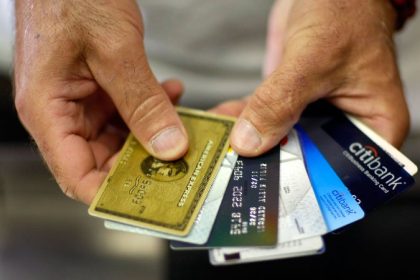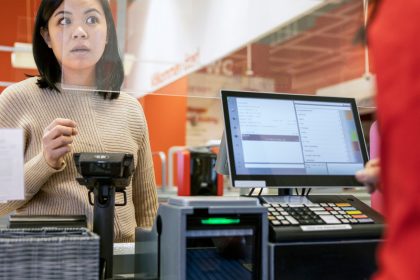Money orders allow you to securely send or receive payments, without having to share sensitive bank account information. They are similar to checks but they can’t bounce because they’re prepaid.
They can, however, get canceled or refunded if not filled out correctly so it’s important to know what information you’ll need to fill out a money order and where that information goes. Here’s how to correctly fill out a money order in 5 steps.
Steps to fill out a money order
1. Fill in the name of the payee
Write the name of the payee of the money order in the “pay to” or “pay to the order of” field. This could be a person’s name or the name of a business. Print the name clearly in ink.
It’s important to fill out this section as soon as you purchase the money order, since this will be the only person authorized to cash or deposit it. If the money order is lost or misplaced without a payee’s name written down, it could be liable to fraud and someone else could write their name on it.
If given the option, fill out your name in the field labeled “from,” “purchaser” or “sender.”
2. Write your address in the purchaser section
Fill in your address where the money order asks for the purchaser’s address. There may be a second address field for filling in the payee’s address. If so, you’ll want to fill that out as well.
3. If you’re paying a bill, write the account number in the memo field
If you’re using the money order to pay a bill, you’ll want to ensure the money is sent to your account. Write your account number in the memo field, which might also be called “payment for” or “account number.”
4. Sign your name in the purchaser’s signature section
Sign the front of the money order where the label says “purchaser’s signature.” This can also sometimes be labeled “purchaser,” “from,” “signer” or “drawer.”
Don’t sign the back of the money order, which is where the payee endorses it.
5. Keep your receipt
Be sure to keep the receipt because it contains a tracking number, which can be used to find out whether the recipient cashed the money order. If the money order is lost or stolen, the tracking number can help you replace it. A processing fee may apply for replacing a money order.
The receipt can also help you cancel the money order should your plans change. You may only be able to cancel the money order if it hasn’t been cashed. You’ll need to provide proof of purchase and fill out a refund request. You might also be required to pay a processing fee.
Limits on money orders
There may be limits on the size of the money order you can purchase. The Postal Service, for example, allows you to buy money orders up to $1,000 if you’re sending it within the U.S.
A money order isn’t free
You will typically pay a fee to buy a money order. Money orders usually cost around $1–$10.
How to purchase a money order
Money orders can be purchased with cash or a debit card at banks and credit unions, check-cashing businesses, the U.S. Postal Service, many grocery stores and some big-box stores.
While you can use a credit or debit card to purchase a money order online, know that fees are much higher than paying directly from your bank account. If you purchase a money order in person, you’ll have to pay with cash.
What happens if a money order is filled out incorrectly?
If you fill out a money order incorrectly, you’re likely not totally out of luck as long as you haven’t sent it to your intended recipient yet. You can have it replaced.
At Western Union, for example, you can’t change the payee’s name on the money order but you can submit a refund request as long as the money order hasn’t been cashed.
You might also be able to write “not used for purpose intended” on the back of your money order and cash it. Check with your bank and the money order issuer for their policies on this.
If the money order is filled out incorrectly and sent, you may still be able to request a refund but only if it hasn’t been cashed yet.
Money order example
Money orders look different from different issuers but they all have the same general fields to fill out. If you’re purchasing a money order from the U.S. Postal Service, a new money order will look like this:
Benefits of using a money order
Money orders can be a useful alternative to checks or cash for paying bills, paying off debt, or making large purchases, especially for those who don’t have a checking account.
They’re a safe option for those who want to avoid a payment bouncing — they can’t be declined for insufficient funds, since they are prepaid. Money orders also don’t require the purchaser to have a bank account since they can be purchased without one, such as with cash.
Additionally, money orders are a good alternative to electronic payments when you prefer or are required to send money through the mail. They don’t contain bank account information, so there’s less chance of falling victim to identity theft and fraud. Plus, as with a check, only the recipient can cash the money order.
FAQ
Bottom line
Money orders are a safe and reliable option for sending and receiving payments. They can be purchased with cash or a debit card and offer a secure alternative to checks or cash. It is essential to fill out all necessary fields accurately and legibly to avoid any potential issues or fraud.
Money orders are a valuable tool for those without a checking account or for sending money through the mail without sharing sensitive bank account information. Consider using a money order for your next payment and enjoy the peace of mind that comes with this secure method.
Read the full article here
















